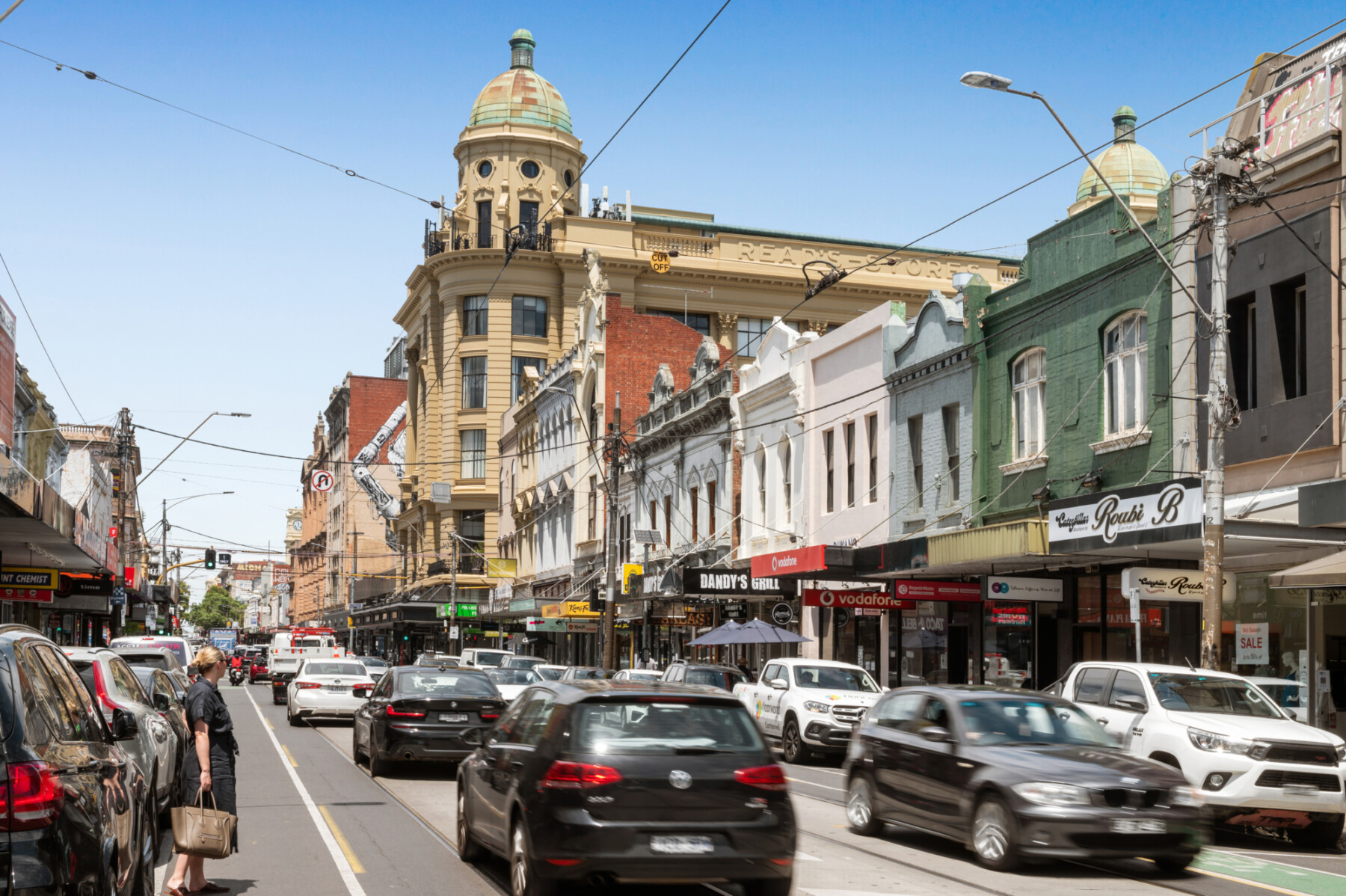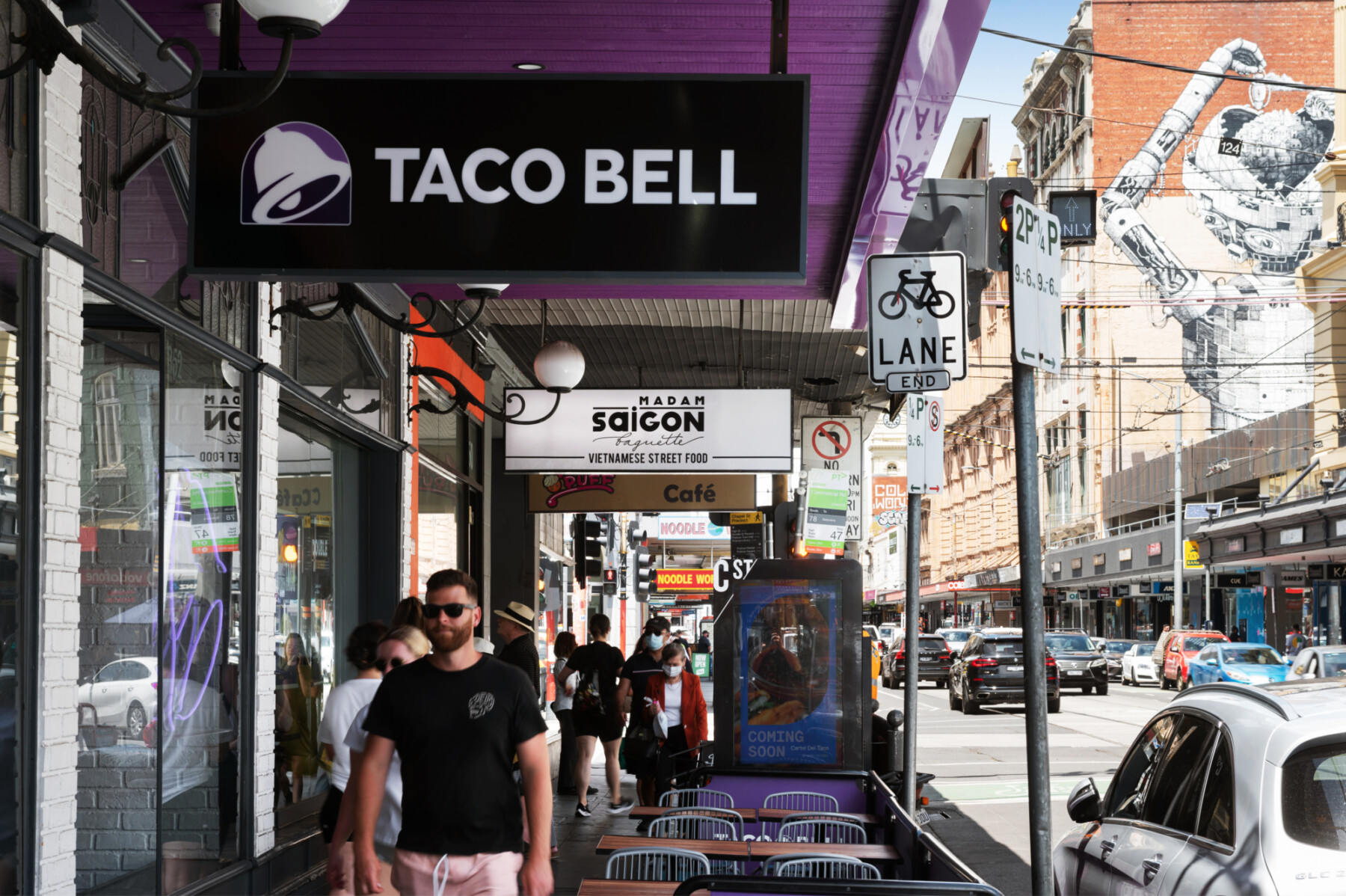Melbourne’s population grew by 3.3% year-on-year, according to the most recent Australian Bureau of Statistics data[1], or an increase of 167,500 people.
“At a time of flexible working arrangements, more people are looking for places in Melbourne where they can live, work and play.
“That ultimately means more people spending more of their time in our strips.”
This year’s Walk the Strip data shows that developments that have been under construction in recent years have reached completion, boosting the immediate residential population and spending power on the strips.
“Developments right on the strips represent countless other projects that have been undertaken in the close surrounds, there is clearly demand for residential product close to shopping, eateries, coffee, beauty salons and fitness offerings.”
A residual spike in hospitality tenants seen during and immediately after the pandemic effectively accounts for the margin in vacancy being lower than the long-term average.
“Hospitality tenants continue to be the most active in our enquiry and in our deals. The trend began during COVID when tenants began snapping up smaller fitted-out spaces, which provided a capital- and time-effective opportunity to open up to new markets within a locked-down Melbourne that had seen a huge increase in demand for takeaway meals.
“People need to eat, and the shift towards takeaway meals – whether they’re picked up by the customer or delivered via services such as Uber Eats – has continued to support hospitality trade. Businesses continue to look for opportunities to take advantage of this, as well as capture new markets.”
Hospitality tenants who have recently taken up space in Melbourne shopping strips noted there is a high demand for quality products in the market at the moment, and highlighted the importance of delivering the right products to the right audience by understanding location demographics and consumption patterns. Market gaps for specific hospitality offerings are also a significant driving factor.
Landlords more flexible with lease terms
“Landlords have largely been more willing to get deals done.” Lockwood said.
“In a theme that we’ve seen become more common in the post-pandemic era, landlords have been more receptive to coaching from real estate agents and are more willing to meet the market on rents.
“Feedback from new tenants on Chapel Street suggests businesses have seen rents recalibrate in the wake of the pandemic, and they are looking to position themselves in well-supported locations ahead of the curve. They are also anticipating more favourable economic conditions and lower interest rates in 2025 and 2026.”
“Landlords are also more flexible when it comes to lease terms, so we’re seeing a range of shorter and longer-term deals being struck that are more amiable to tenants’ needs.”
Landlords are also keeping fit-outs across each of the retail sectors in greater numbers.
“We’ve seen the huge take-up of hospitality tenants since COVID, as operators look to move in quickly and on fitted spaces that allowed for a faster and more cost-effective entry into new markets amid heightened demand for takeaway services.
“Comprehensive, high-end hospitality fit-outs can cost as high as between $5,000 and $7,000 per sqm at the moment.
“We’re seeing that extend to other types of fit-outs, from shelving and racking for clothing boutiques to equipment and furniture for dentists, as tenants are more conscious of capital outlay when it comes to setting up their business.”
Church Street Brighton takes the title again
Church Street, Brighton again took out the title of the lowest vacancy in Melbourne’s strips, at just 0.7% – effectively one shop.
“Church Street, Brighton the perennial holder of the mantle,” Lockwood said.
“It’s also traditionally commanded among the highest rents, with a long queue of high-end boutiques and national traders jostling to get into the supply-constrained strip which services one of Melbourne’s most affluent and established catchments.”
However, challenging for the title of Melbourne’s premier shopping strip is High Street, Armadale. The strip recorded a vacancy rate of 2.3%, and can lay claim to the city’s most expensive rents, with absolute prime shops commanding as much as $2,000 per sqm depending on size, compared to Church Street, Brighton’s circa 1,300 to $1,400 per sqm.
“The surge we’ve seen retailers looking to get a foothold into High Street, Armadale is unprecedented,” said Fitzroys Associate – Agency Lewis Waddell.
“Without a doubt, High Street, Armadale is the most in-demand strip in Melbourne, and possibly Australia.”
“High Street, Armadale is at the seat of a established and very affluent catchment that is quite broad – one that spans Armadale, Malvern, blue-ribbon Toorak, and South Yarra – and now draws visitors from beyond to its quality offering of boutiques,” Waddell said.
“This catchment provides excellent foot traffic and spending power.”
Acland Street, St Kilda was the biggest improver in terms of vacancy rates, with a 3.4% reduction in vacancies to 9.4%, below its pre-pandemic rate. Near the strip, Gurner has recently delivered the $540 million Saint Moritz residential project, while numerous developments are earmarked for nearby Fitzroy Street, and Port Phillip Council has flagged multiple invigoration initiatives for Acland Street – its Acland Street Vacant Shop Project aimed to fill between five and 10 vacant shops on street during the reporting period – as well as plans for a new entertainment venue at the adjacent St Kilda Triangle site.
“There are a number of Melbourne shopping strips experiencing a period of generational renewal. Developments on and around the strips are underpinning future trade and rent prospects,” Lockwood said.
Among the best examples continue to be Puckle Street, Moonee Ponds, at the heart of a generational boom that includes the recently-completed Penny Lane development – which has brought 114 apartments, a Palace Cinema, and new retail space to the strip – and the unfolding $2 billion redevelopment of the nearby Moonee Valley Racecourse. The boost in the immediate catchment has seen its already-skinny vacancy come down to a long-term low 3.1%, with service and food and beverage retail both hitting all-time highs in the strip to cater to the everyday needs of the growing local population.
High Street, Armadale is also a noteworthy beneficiary of development on the immediacy of the strip, with developments having brought or bringing around 115 apartments as well as adding quality retailers in famed Sydney butcher Victor Churchill, The Leaf Grocer and Lune Croissanterie.
Smith Street, Collingwood has seen both residential and commercial developments spring up, which have supported trade through all hours on the way to the popular lifestyle strip recorded a low vacancy rate of just 3.2%, A raft of medium and high-density dwellings are meeting the demand from young professionals looking to live close to what influential global publication Time Out in recent years declared the “Coolest Street in the World”[2]; meanwhile, a growing commercial market has been attracting big-name brands such as Aesop, as well as a multitude of creatives and start-ups looking to be near a world-class offering of cafes, eateries and nightlife. The commercial market also currently offers a less heated rental environment than city-fringe peers Richmond and Cremorne, which themselves have grown symbiotically with Swan Street, Richmond (which for yet another year posted a single-digit vacancy of 7.2%).
Other eclectic inner north hospitality and lifestyle favourites that have captured the attention of Time Out in the past year have also outperformed in the vacancy rate stakes. High Street, Armadale – crowned the “Coolest Street in the World” for 2024[3] – was close to its long-term low at just 4.1%, while Lygon Street in Brunswick East – named the sixth “Coolest Neighbourhood in the World”[4] – and the newest addition to the Walk the Strip series, was at just 3.7%.
Perhaps Australia’s most famous shopping and lifestyle strip, Chapel Street, South Yarra, recorded a long-term low of 7.1%, having sat at 20.4% during the pandemic. Tenants have been attracted to the strip through landlords meeting the market, and the boost to the immediate catchment and spending power brought by high-density residential developments, namely in the adjacent Forrest Hill precinct. There is anticipation from tenants that further activity will be brought by Gurner and Qualitas’ $2.75 billion overhaul of the Jam Factory precinct and Greystar’s new $500 million build-to-rent project, as well as Oreana’s $250 million redevelopment of South Yarra Square and V-Leader’s $90 million revamp of Hotel Claremont.
Former factory outlet hub Bridge Road, Richmond continues its transition into what is now effectively three contiguous strips. Vacancies came down in the hospitality-dominated section between Church Street and Burnley Street, while they were higher through the middle at 14.7% – the strip between Church and Lennox Street has the highest vacancy rate in Melbourne – and also lifted towards the Punt Road end, where trade is underpinned by the Epworth Hospital and other health and medical services, to 13.8%.
Sources:
[1]https://www.abs.gov.au/media-c...
[2]https://www.timeout.com/melbou...

